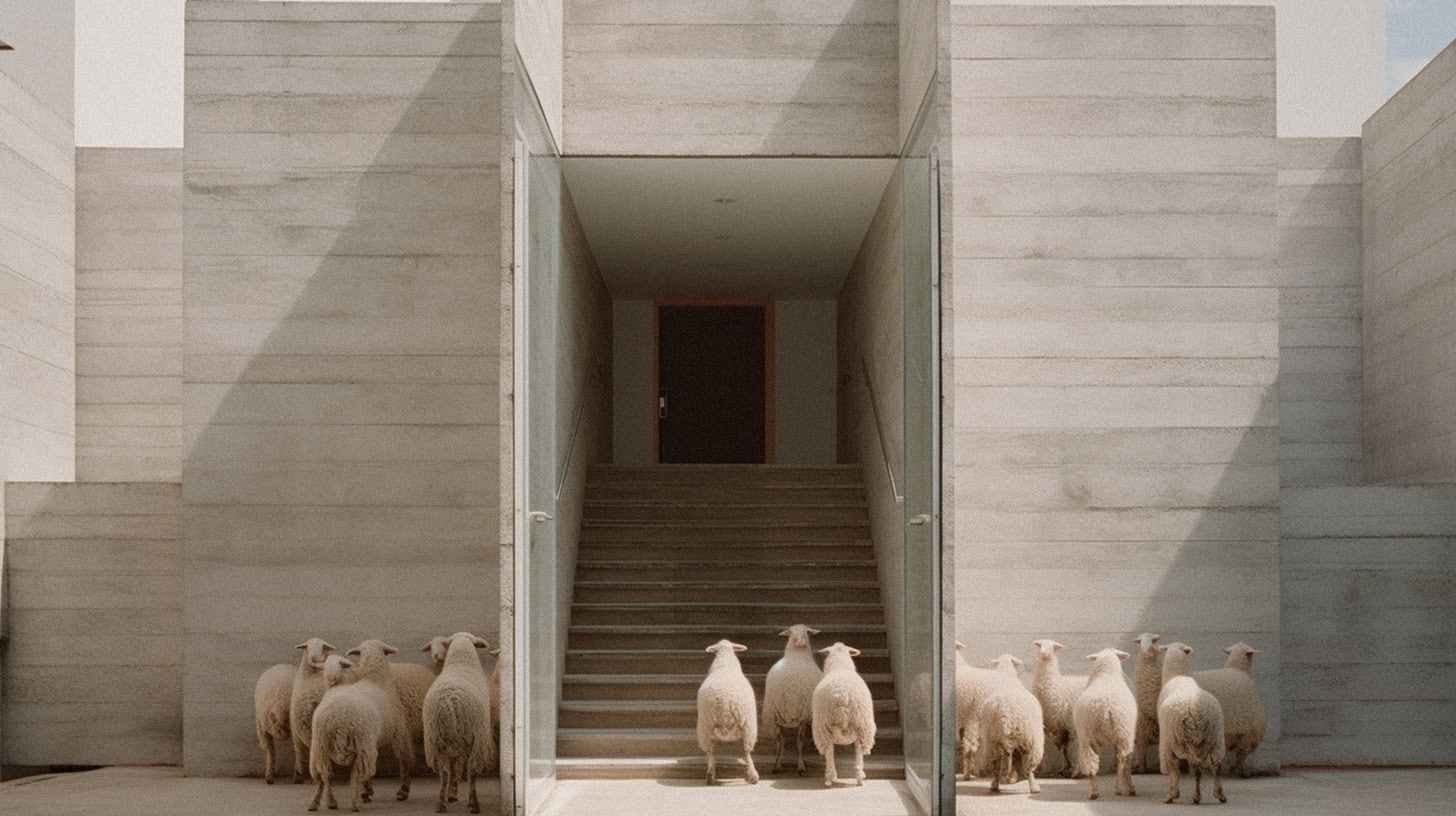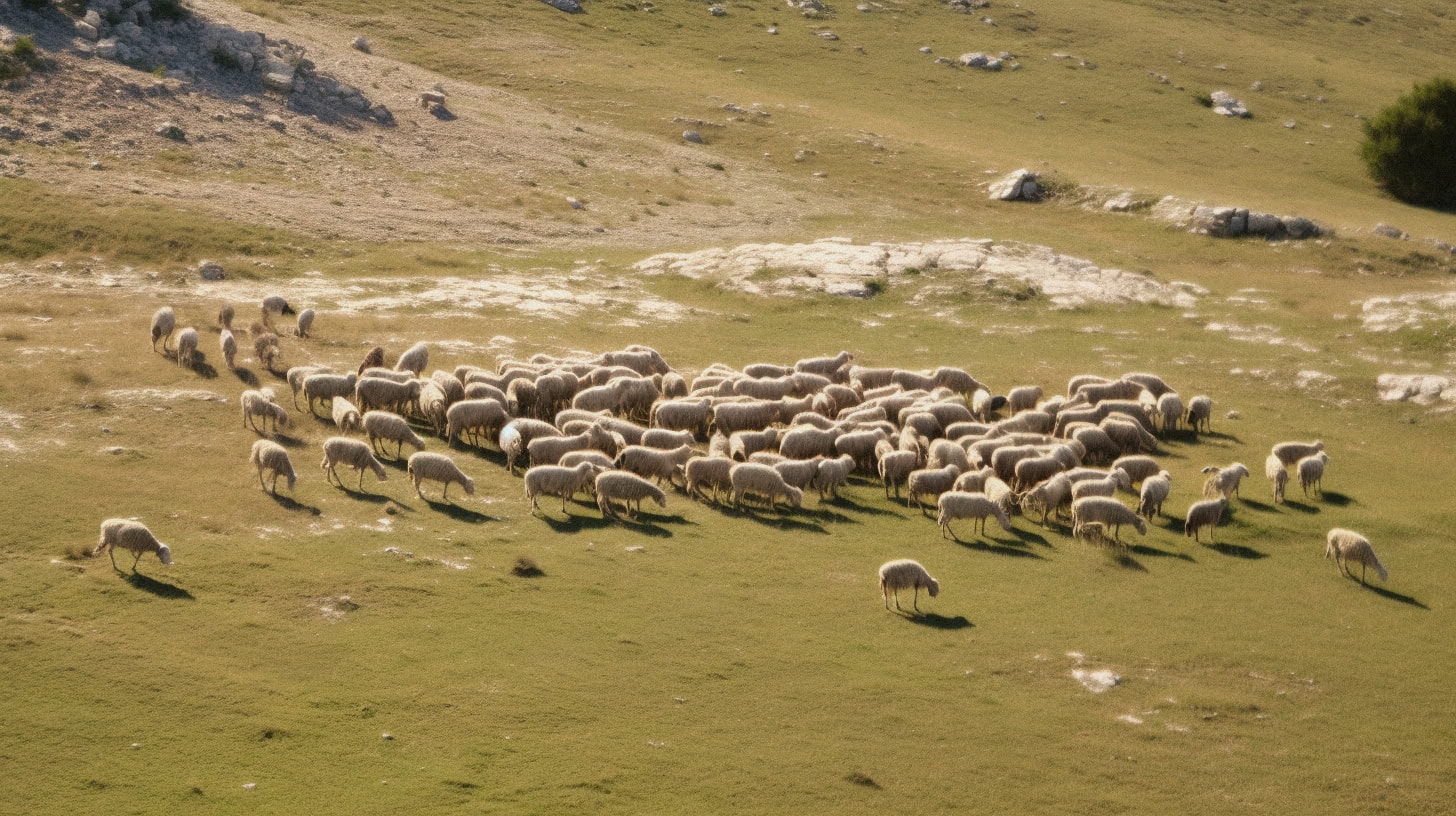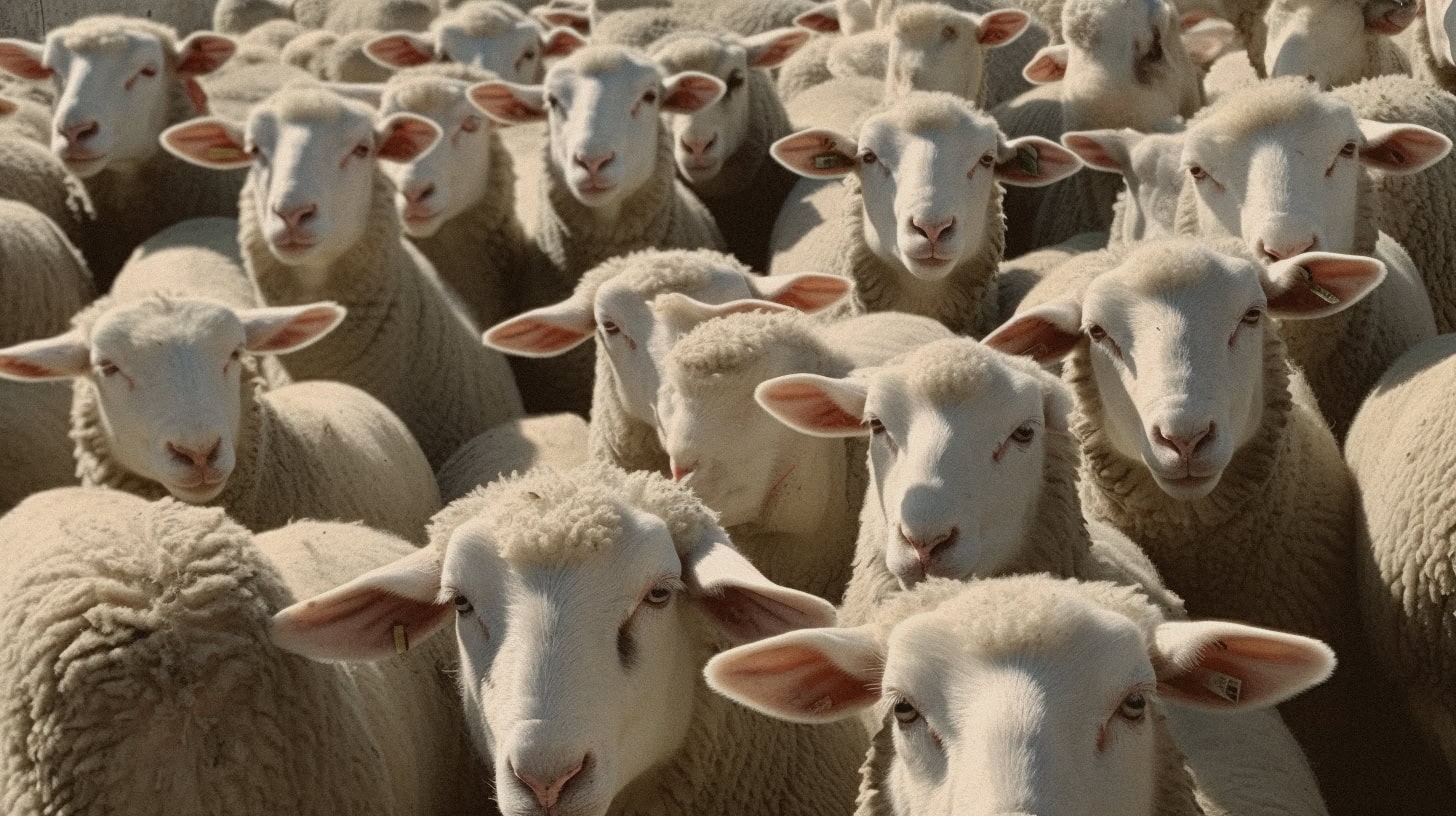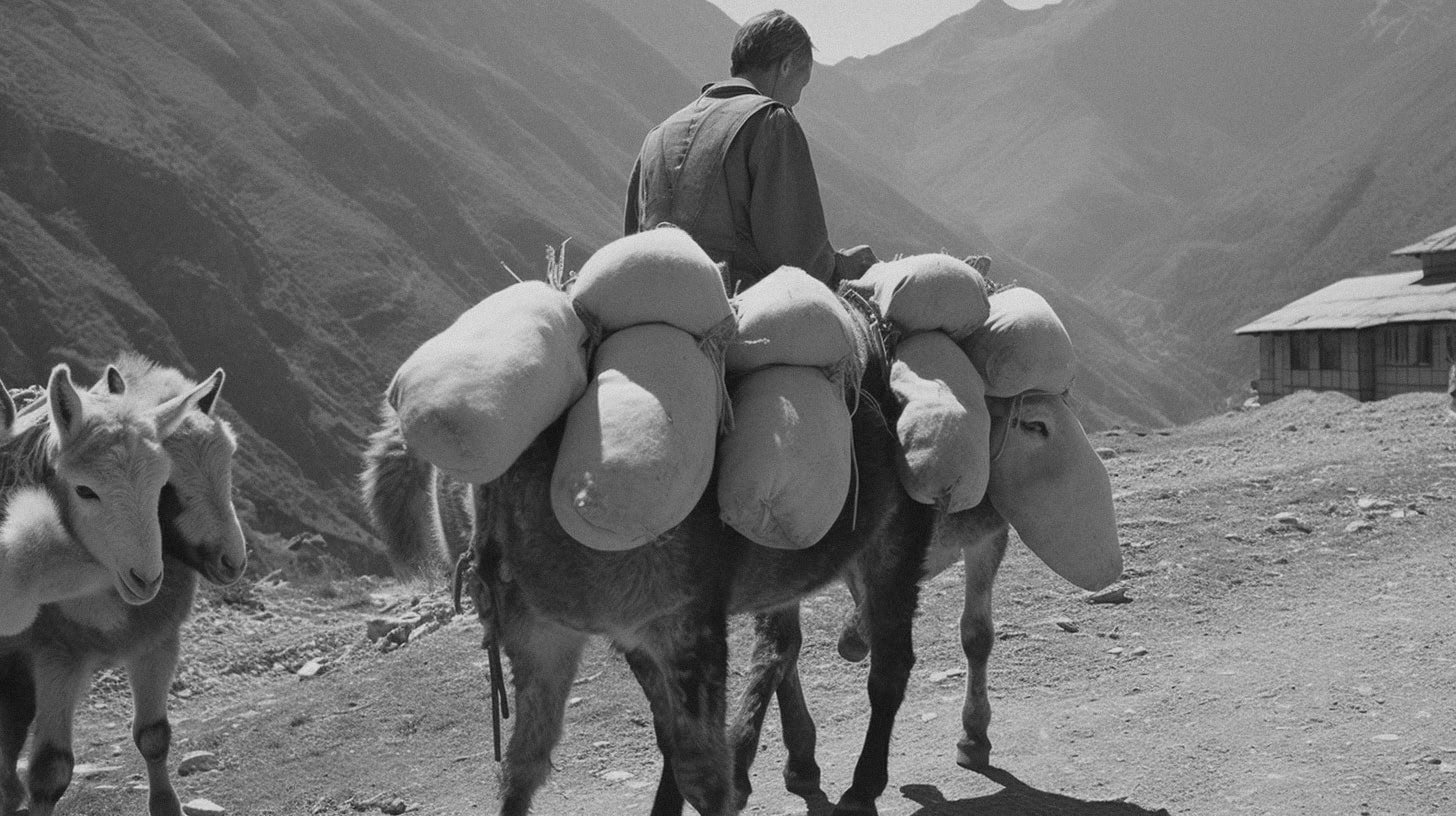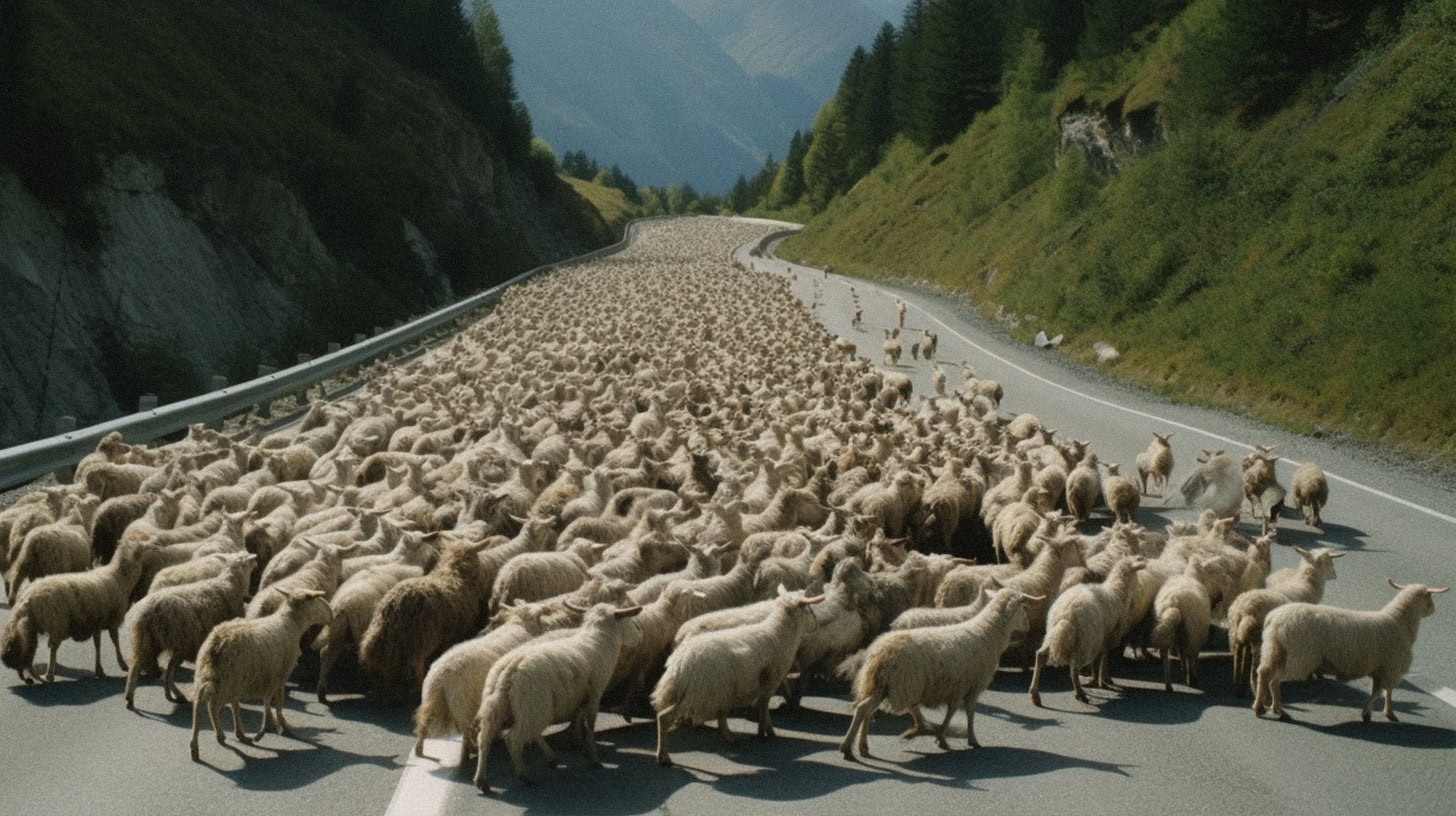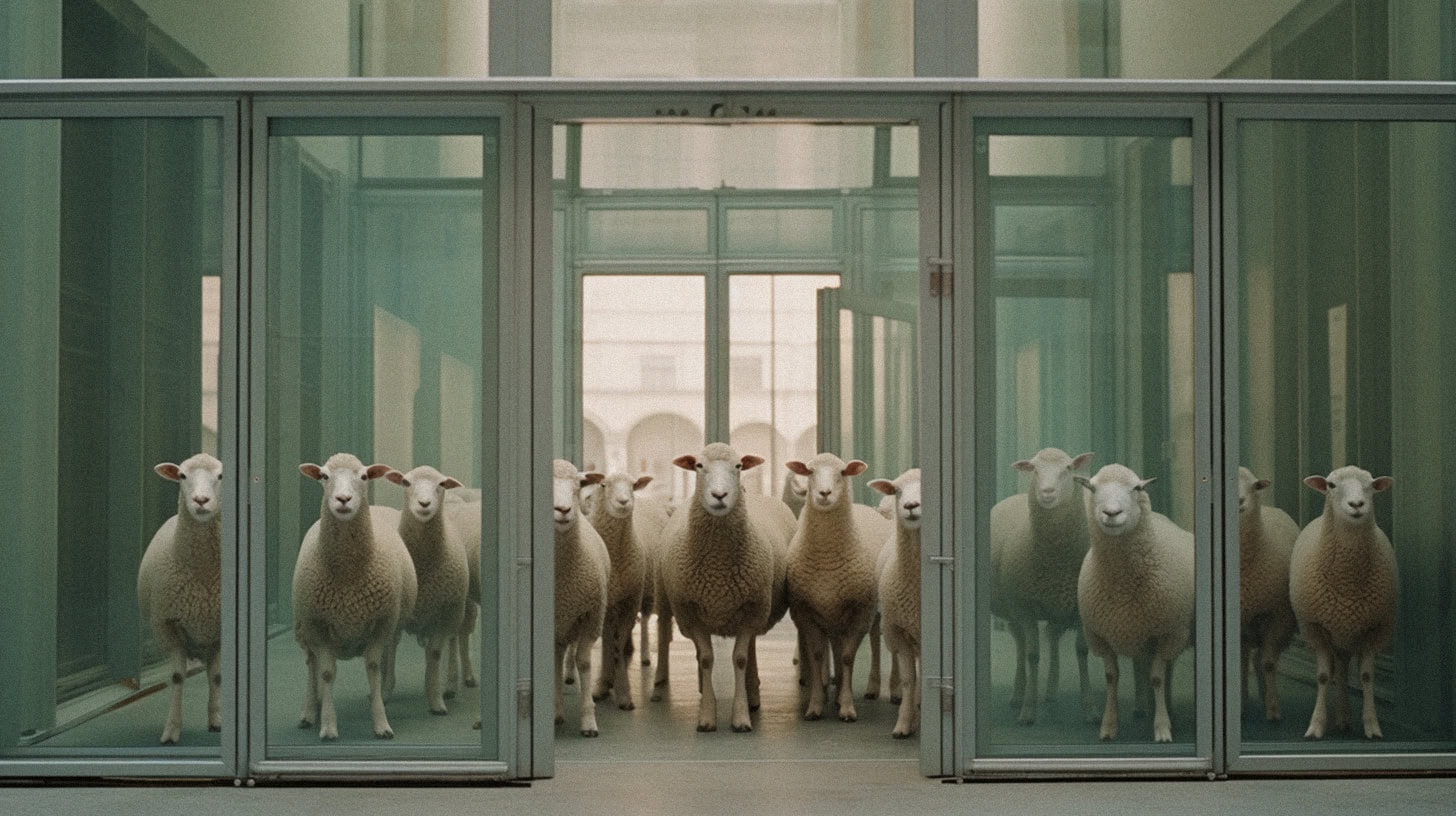The practice of transhumance is an ancient tradition observed by a handful of breeders in Italy, honouring a millennium-old custom that has been recognized by UNESCO as an
intangible cultural heritage of humanity since 2019. Transhumance, derived from the Latin words ‘trans,’ meaning beyond, and ‘humus,’ signifying Earth, refers to the seasonal migration of grazing animals from high mountain pastures to the lower plains.
In Italy, this annual journey involves the movement of various livestock, such as cows,
sheep, and donkeys, along historic migration routes known as ‘batida.’ Approximately 60
flocks, each comprising 1,000-1,500 animals, undertake this passage, lasting between 10
to 20 days. However, the youngest members of these flocks, the newborn lambs, are
unable to traverse the rugged terrain on their own. To aid their journey, these vulnerable lambs are transported in custom-made side saddles affixed to the backs of donkeys and mule nannies. Carried in these pouches, the lambs are safely conveyed down the mountainside to designated rest stops. At these pauses along the route, the lambs are reunited with their mothers, allowing them to feed and bond before continuing the journey. This annual migration represents not only a vital aspect of Italy’s agricultural heritage but also embodies a profound connection between animals, nature, and the preservation of centuries-old traditions.
Today, the process of transhumance, whether mounting to high pastures or descending back to the plains, has become more intricate due to human interventions in rural areas. These alterations, like the construction of new roads, and buildings, and the introduction of different crops, have subtly but significantly modified the traditional migration paths of grazing animals. The consequence of human intervention in rural landscapes has resulted in scenes where livestock must navigate through urban centres, pausing to graze on grass from private gardens or hedgerows. I sought to visually depict my transhumance experience. Adapting to their new surroundings, the sheep wander into the urban sprawl, grazing on grass in private gardens, city parks, and along streets. In the end, their journey leads them to an unexpected place: a museum displaying an abstract painting resembling a field of grass. This scene wants to highlight nature’s adaptation to urbanisation, prompting reflection on the changing landscapes and the potential loss of centuries-old traditions due to our impact on the environment.
